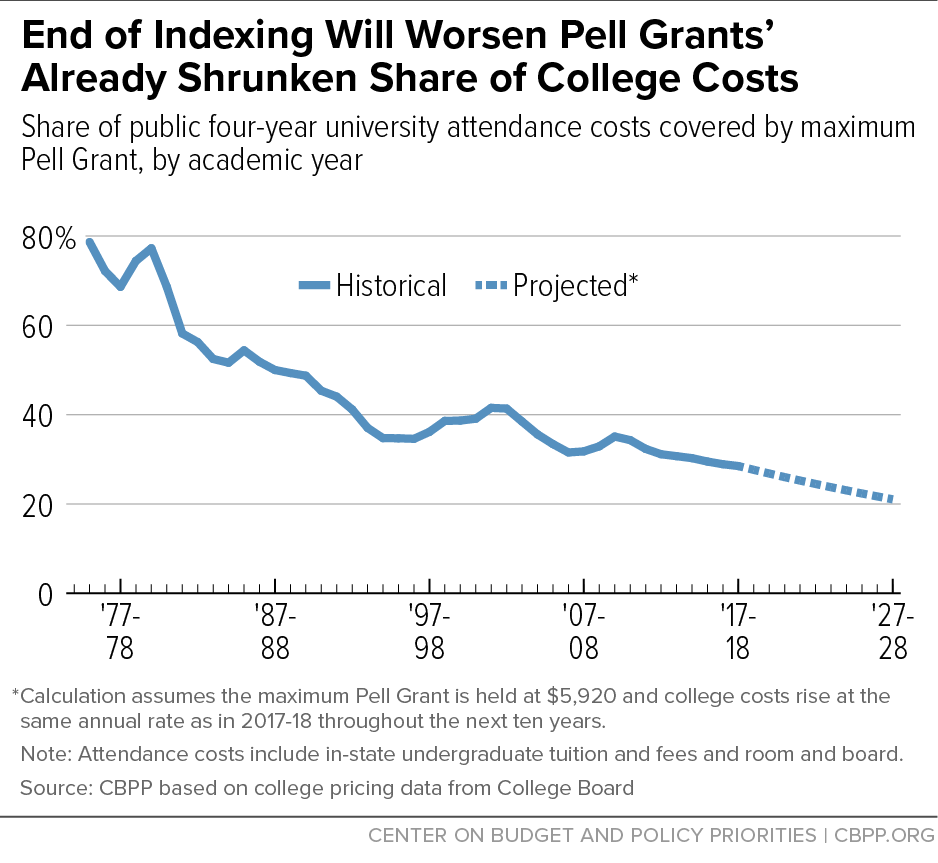BEYOND THE NUMBERS
The purchasing power of Pell Grants for low- and moderate-income college students stands at its lowest level in more than 40 years, with the maximum grant covering just 29 percent of the cost of attending a four-year public university or college. Unless President Trump and Congress act, that decline will likely accelerate in the coming academic year when the grant’s automatic inflation adjustment expires. Policymakers should boost the 2018 grant through the coming omnibus appropriations package that will fund the federal government for the rest of fiscal year 2018, and for future years they should index the grant permanently to cover inflation.
Pell Grants are the cornerstone of federal financial assistance that helps make college education available for students from low- and moderate-income families. They now help about 7.5 million students, and they help increase enrollment, reduce drop-out rates, and improve student outcomes. (More information on these points and the importance of Pell Grants is here.
The maximum Pell Grant, which goes to students with the most financial need, is now $5,920. About four-fifths of the grants are financed through the combination of annual appropriations and supplementary funding that policymakers enacted during the Great Recession and its aftermath when Pell costs were rising rapidly. The rest comes from “mandatory” funding provided through authorizing law rather than the appropriations process; this mandatory funding has financed annual inflation adjustments in the Pell Grant since 2013. The provision of law that allows for annual indexing expires at the end of the current academic year, however.
Even with past increases in the grant amount and recent indexation, Pell Grants have fallen further behind the cost of college. Rather than the 29 percent of the average cost of attending a four-year public college as an in-state student that the maximum grant now covers (see chart), the grant covered 79 percent of costs in 1975 and 42 percent in 2001. If indexing ends, Pell’s fall in value will likely accelerate.
In the omnibus appropriations package that they’re writing, policymakers could provide a 2018 increase in Pell’s appropriated portion. In its bill that funds Pell Grants, the Senate Appropriations Committee approved a $100 increase in the 2018 grant — and that was before the President and Congress reached their two-year, bipartisan budget agreement that provides significant overall increases for appropriations for 2018 and 2019. The $100 increase is welcome, but it’s less than what’s needed just to fully offset inflation. And given how far they’ve fallen compared to the cost of college, Pell Grants warrant more than a simple inflation adjustment. To boost the 2018 grant, moreover, policymakers wouldn’t have to provide a 2018 appropriations increase; they could tap the significant carryover balances that are now available. For future years, the President and Congress also should make permanent the automatic indexing provision in authorizing law.

